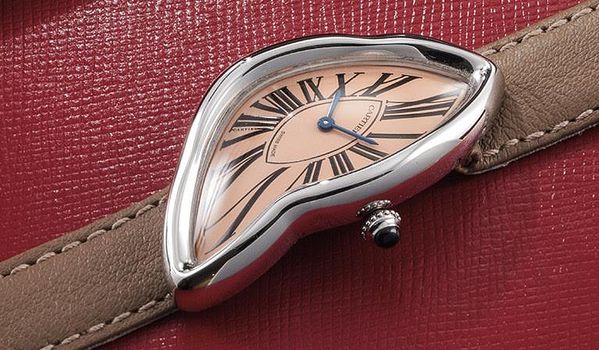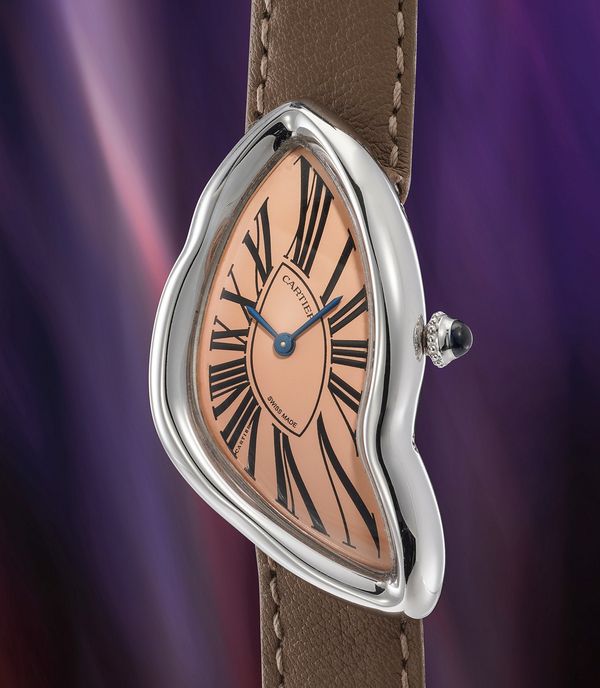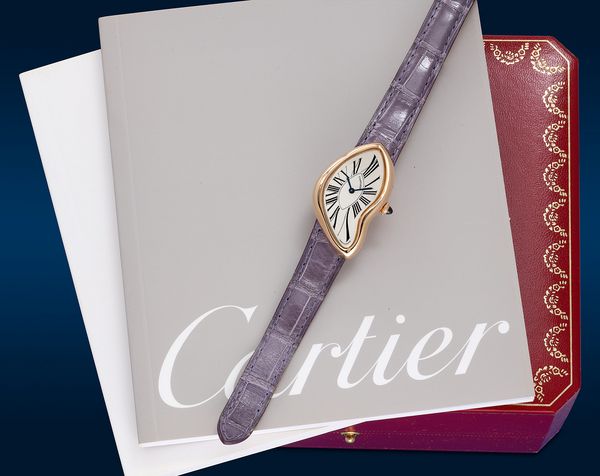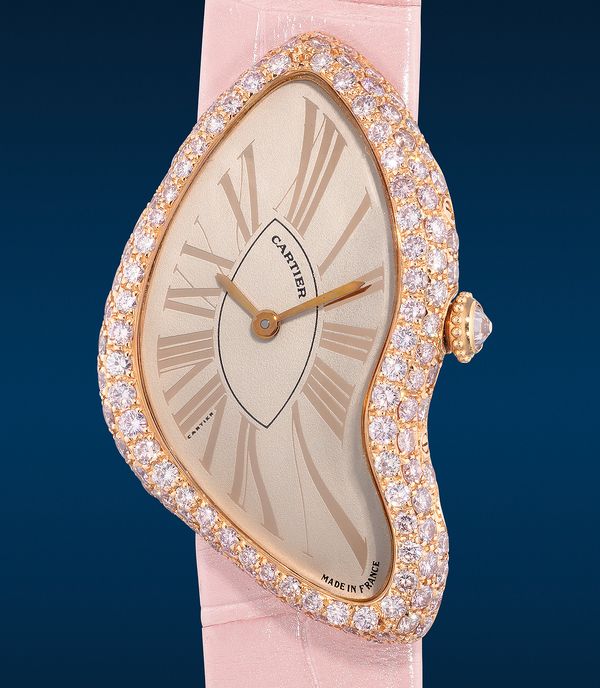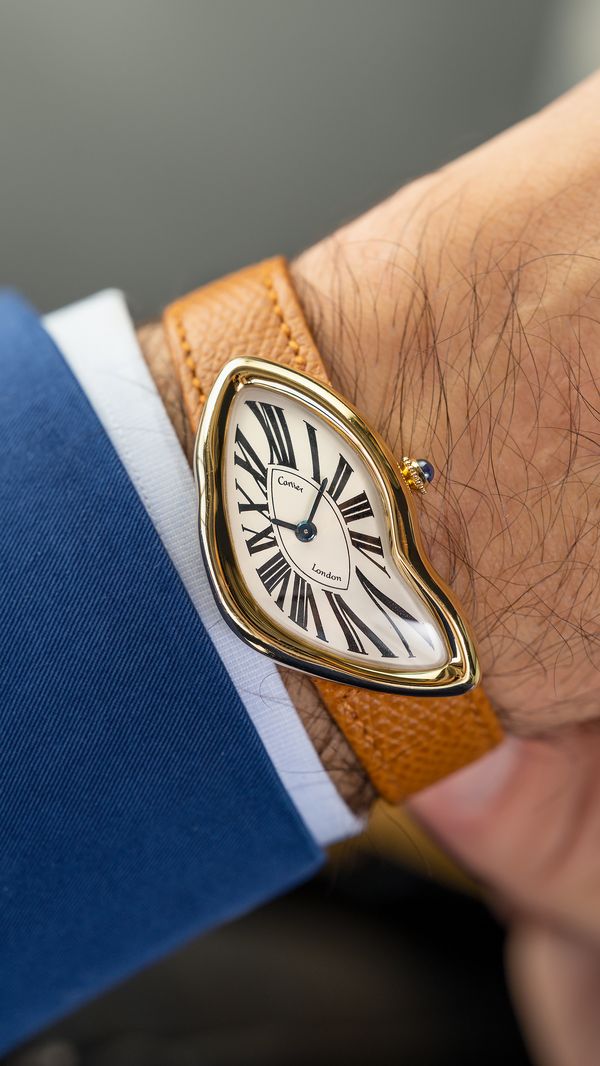Our first live auctions of the fall 2023 season are here! The PHILLIPS Geneva Watch Auction: XIX, takes place on May 11 and 12, at the Hotel President, at Quai Wilson 47 in central Geneva, and the Hong Kong Watch Auction: XVIII takes place on May 24 and 25, at our West Kowloon headquarters. We'll be highlighting a number of the most interesting lots and stories featured in the sale right here, including the various Cartier Crash examples that's featured below.
To celebrate the upcoming auction season, we're republishing one of our top stories of 2022, which explores the true origin of the legendary Cartier Crash.
– By Francesca Cartier Brickell, excerpt from The Cartiers: The Untold Story of the Family Behind the Jewellery Empire.
Stories abound about the provenance of the Crash watch. Created in 1967 under Jean-Jacques in London, its asymmetric shape was a departure from Cartier’s more classic style. Some have claimed the idea came when a Cartier Maxi Oval watch (known as a Baignoire Allongée) half-melted in a car crash. Others have suggested that the inspiration must be Salvador Dalí’s pocket watches in his surrealist 1931 painting The Persistence of Memory.
The reality was that the 1960s were a time of nonconformism in London. Several loyal clients, including the actor Stewart Granger, had been demanding a watch “unlike any other.” Jean-Jacques, who worked closely with the designer Rupert Emmerson on watches and cases, discussed with him how they might try adjusting the popular Maxi Oval design to look as though it had been in a crash “by pinching the ends at a point and pulling a kink in the middle.”
Emmerson then presented several variants of the proposed idea to his boss at their next design meeting, even one with a cracked-looking dial in order to make the crash theme more realistic. That was going slightly too far for Jean-Jacques, who, for all his openness to new ideas, still felt that the finished article should be an object of beauty. So Emmerson was asked to “tone it down” somewhat, the idea of a cracked dial was scrapped, and a final design was approved.
Creating the first Crash watch was far from straightforward. After Jaeger-LeCoultre had been consulted over the most appropriate movement to use, the design was passed to the craftsmen in the Wright & Davies workshop. Here a template was created and the watch case was made from sheets of gold. A standard watch case may take thirty-five hours to make, but this one, with its irregular curves, was a major departure from the rectangular, square, and oval models and would take far longer.
Once the case was completed, it was sent to Eric Denton, Cartier London’s head watchmaker, who would combine it with the movement, dial, and winder. It was here that the real complications started.
As Denton soon discovered, it was almost impossible to ensure that the numbers on the squashed dial remained at the right places to tell the time correctly. “That first Crash watch caused a lot of headaches. You see it’s all very well coming up with a good-looking design, but it had to tell the time too! And because the dial was irregular, the numbers weren’t at the standard places,” Jean-Jacques recalled. The watch had to be deconstructed and the dial extracted and repainted by Emmerson (no easy feat, given that the numbers were painstakingly painted on by hand in a surrealist style).
Once the watch was then put together with the new dial, it still didn’t tell the time correctly, and the whole deconstruction, dial repainting, and reconstructing had to be undertaken again. And then again. In the end it took multiple attempts and far longer than anticipated.
An early Crash watch was sold to Stewart Granger, the actor who had previously requested something new and different. He took it home to try it but brought it back a week later, having decided that it was too unusual after all and that he wanted something more classic instead. Under Jean-Jacques, Cartier London created only about a dozen Crash watches.
For all the enormous work involved, the Crash watches did not make the firm huge profits. The first one was sold for around $1,000 (approximately $7,500 today). “We should have charged more,” Jean-Jacques later admitted. “Especially given how long each one took, tying up the workshop for an extended period. But you simply couldn’t charge too much then. There wasn’t that much wealth around. When I see what they go for today, oh my!”.
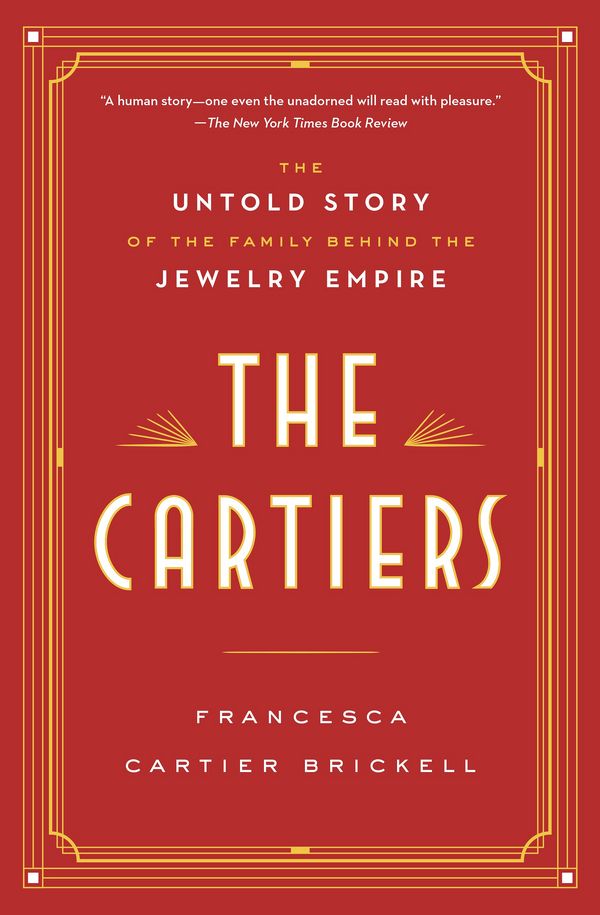
Phillips would like to thank Francesca Cartier Brickell for sharing the above excerpt from The Cartiers: The Untold Story of the Family behind the Jewellery Empire and highly recommend Cartier enthusiasts to pick up her book to learn more about the French Maison, founded in 1847 and managed by the Cartier family for more than 100 years.
You can learn more, place a bid, and view the entire Geneva Watch Auction: XIX catalog here, and the Hong Kong Watch Auction: XVIII catalog here.
About Phillips In Association With Bacs & Russo
The team of specialists at PHILLIPS Watches is dedicated to an uncompromised approach to quality, transparency, and client service. Phillips in Association with Bacs & Russo holds the world record for the most successful watch auction, with its Geneva Watch Auction: XIV having realized $74.5 million in 2021. Over the course of 2021 and 2022, the company sold 100% of the watches offered, a first in the industry, resulting in the highest annual total in history across all the auction houses at $227 million.
Recommended Reading
The Eternal Appeal of Cartier Wristwatches
